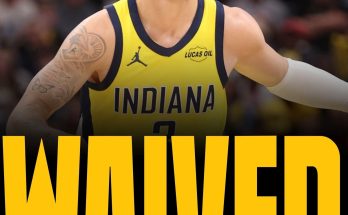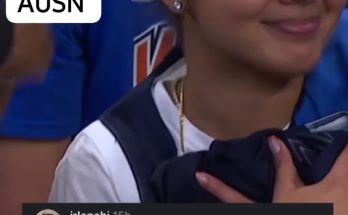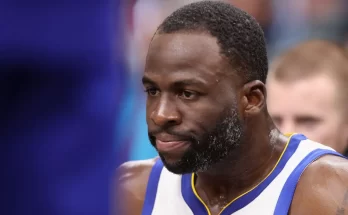The New York Rangers lit up the hockey world this week with a surprising and seismic decision: the organization has officially parted ways with their $7.7 million defenseman. In a move that’s already reverberating across the NHL, the Rangers’ brass chose not to extend a qualifying offer to Zac Jones, effectively making the young blueliner an unrestricted free agent as of July 1. For many, this decision marks the end of a tumultuous chapter in Jones’s career—a once-promising prospect whose tenure with the Blueshirts has been defined by inconsistency, underutilization, and salary cap realities.
Jones, 24, was drafted by the Rangers in 2018 after an impressive college career at UMass. He broke into the NHL, showed flashes of potential, and seemed to offer the kind of steady, mobile puck-moving defense that modern teams covet. Across 115 NHL games, he tallied four goals and 24 assists—solid numbers, though hardly eye-popping. What stood out more was his fluctuating role: last season alone, he was a healthy scratch 36 times, shuffled around as a seventh defenseman and rarely given the trust to stick with a regular pairing.
That lack of trust eventually took a toll. According to reports, Jones publicly expressed frustration over buried playing time, lamenting that he was “rotting away” as he was passed over in favor of veteran options. The Rangers—not wishing to risk arbitration and a spike in his salary—ultimately concluded the cap figure wouldn’t align with his contributions. With limited financial flexibility and looming needs elsewhere, they quietly decided to let him walk.
It’s a messy parting. Jones had earlier received a contract offer during the summer—details remain undisclosed—but mutual agreement couldn’t be reached. The team cited concerns over arbitration potentially inflating his cap hit, and the player sought a stable role he simply couldn’t find in New York. The result is an amicable but telling split. For the Rangers, freeing up both roster space and cap room is a step toward reshaping a blue line that underwhelmed throughout the 2024–25 season.
And boy, did the blue line underwhelm. The Rangers, once a defensive juggernaut who claimed the Presidents’ Trophy, missed the playoffs entirely last year—a collapse that triggered sweeping changes. They fired head coach Peter Laviolette, sent veteran Jacob Trouba to Anaheim, and traded stalwart Ryan Lindgren to Colorado at the March deadline. Gone too was the fan-favorite Chris Kreider, moved in June to Anaheim for a prospect and pick, clearing a $6.5 million cap charge.
Cap space, more than anything else, has defined this offseason. With roughly $13 million remaining—and numerous restricted free agents to re-sign—the Rangers’ front office is operating under severe constraints. That’s why Jones, however promising in youth, became expendable. Letting him walk not only avoids arbitration risk, but also ensures they maintain flexibility to address bigger holes on defense.
That leads directly to why this move matters so much: the Rangers are now in pursuit of a top-pairing defenseman. The target? Russian left-shot blue liner Vladislav Gavrikov from the Kings—he’s widely expected to command a \$7–8 million contract for the next few seasons. According to Elliotte Friedman, Gavrikov has already opted to join New York, which would inject a heavy dose of stability and physicality into the top four well ahead of free agency. But to land him, the Rangers must first make room—both on the ledger and within their lines.
Zac Jones’s departure is the first domino. He may not have been a top-four stalwart, but his exit sends a message: cap space is sacrosanct, and ice time is no longer promised. That’s a signal to other players in RFA limbo—like K’Andre Miller and Will Cuylle—that unless they accept manageable deals, they too could be bargains cast aside.
Miller’s situation is particularly tense. Once considered a future franchise cornerstone after a 43-point campaign in 2022–23, the 25-year-old saw production dip to 27 points last season, fueling speculation that the Rangers are “testing the market” on him—just as they did with Jones. Elite insiders like Sean Avery have even drummed up the drumbeat for a Miller exit. It’ll be fascinating—or nerve-wracking—for fans to watch whether Miller sticks as part of Drury’s long-term plan or is moved to make way for veteran, locked-in options.
And that’s just the defense. Offense-wise, the Rangers have had to overhaul their attack too. Kreider’s departure was the headline, but the ripple effects are bigger: Mika Zibanejad’s role is under re-evaluation, with speculation he’ll move to wing. They may chase a third-line center in free agency—names like Pius Suter and Nick Bjugstad have circulated. The draft also saw them sit idle in the first round—for the first time since 2022—after trading their 12th overall pick to Pittsburgh to complete the J.T. Miller deal.
So while this article began with a \$7.7 million defenseman leaving town, it’s quickly revealed a much larger story: the Rangers are ripping apart half their roster, clearing salary, and repositioning for a new identity under GM Chris Drury and coach Mike Sullivan. They’re shedding older contracts, scrapping veteran loyalties, and retooling on the fly.
The cap math alone is treacherous. Between Gavrikov’s potential deal, re-signing Miller (or not), extending Cuylle, and possibly adding another top-four defender or third-line center, the Rangers have a narrow window to maintain roster cohesion while not bursting the cap ceiling. They’ve already lost \$6.5 million from Kreider, roughly \$4.5 million from Lindgren’s exit, and another \$7.7 million by letting Jones walk. That’s more than \$18 million freed—now they must judiciously reinvest.
This isn’t just a roster update; it’s a philosophical reset. From a win-now juggernaut under Laviolette to a lean, flexible contender under Sullivan, the Rangers are shifting tone. They traded consistency for optionality, removing the shackles of big-money deals and prioritizing structural freedom. The move on Jones—a player still on the cusp—underscores that no space is too small to fail in cap-conscious hockey.
Will it work? That hinges on their next moves. Landing Gavrikov would plug a glaring hole on the left side and give the top pair a twin big-body presence alongside Adam Fox. Re-signing or replacing Miller will define their internal growth trajectory, while additions at forward could stabilize a once-unstable scoring depth chart. Most importantly, Drury must ensure this isn’t just a teardown disguised as retooling—but a pivot with purpose.
For Zac Jones, it’s a bittersweet departure. Unrestricted and free to negotiate, he may find a clearer path elsewhere. He’s still young, skilled, and hungry for a stable role—something that eluded him in New York. But his exit is both a symbolic point of crisis and a practical cap-saving move. And for Rangers fans, it’s another blow in a summer that’s already seen fan-favorites like Kreider, Trouba, and Lindgren walk away.
The NHL landscape watches keenly. In just one week, the Rangers have signaled they’re willing to let go of long-term depth and nostalgic names in favor of cap efficiency and top-end talent. Jones’s departure fits the drill: cut the fat, lock the core, target the big fish. The strategy is risky, the market unforgiving—but if it pays off, the Rangers could emerge leaner, meaner, and more balanced in a brutal Metropolitan Division.
At a deeper level, this all speaks to modern hockey’s economics. The salary cap isn’t just a payroll measure—it’s a roster management puzzle. Teams like New York, chasing every cent of space, are deprioritizing homegrown depth in exchange for vetted veterans with contract control. That shift may cost them goodwill in the locker room; it may fracture budding chemistry. But it may also unlock the kind of structural fluidity that champions covet.
Jones is the first casualty of that philosophy, but almost certainly not the last. As July 1 dawned and free agency opened, the Rangers’ moves continue: names like Gavrikov, Suter, and Dvorak are in play, Miller’s future hangs in the balance, and the entire roster remains in flux. Fans must brace themselves for more departures—even unexpected ones—as Drury plays a high-stakes salary game.
So the \$7.7 million defenseman is gone. His absence won’t break the ice on Broadway, but it echoes a message: legacy means little next to the ledger. The Rangers are resetting—maybe not rebuilding, but reformatting. They’re sacrificing long-time pieces for flexibility, trusting that Sullivan’s vision and Drury’s acumen can harness cap-freedoms into sustainable excellence.
And yet, the real outcome won’t be known until the puck drops. Will this stream of calculated exits and targeted signings rebuild an elite blue line and balanced roster? Or will the hole left by chemistry and depth undermine any top-pair upgrade?
Only time will tell. But for now, one thing is clear: Zac Jones’s departure is emblematic of a team in transition, and in today’s NHL, transitions are measured in dollars just as much as in goals. The Rangers have officially hit the reset button—now the pressure is on to show that money freed equals points earned.


